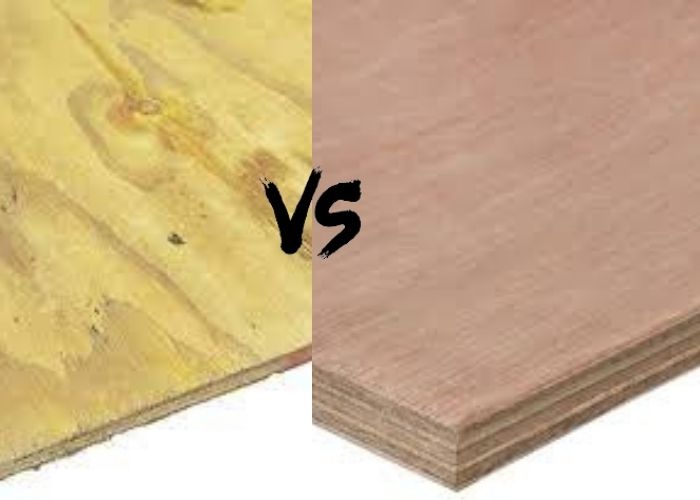Plywood comes in different forms, depending on its design and mode of production. Different plywood products also have different use-cases and applications.
Each form has features that make them suitable for specific reasons. In this article, we will compare pressure-treated plywood vs marine plywood.
Aside from covering the distinctions between marine grade plywood and pressure-treated plywood, we will consider their pros and cons, therefore, allowing you to make an informed decision on which type is better suited for your craft.
Pressure Treated Plywood vs Marine Plywood
In contrast to ordinary pressure-treated lumber, marine grade plywood doesn’t utilize any chemicals and consequently won’t provide substantial protection against rot, mold, or moisture.. Instead, numerous thin layers are bound together with a waterproof adhesive to create the material..
What is Pressure Treated Plywood?
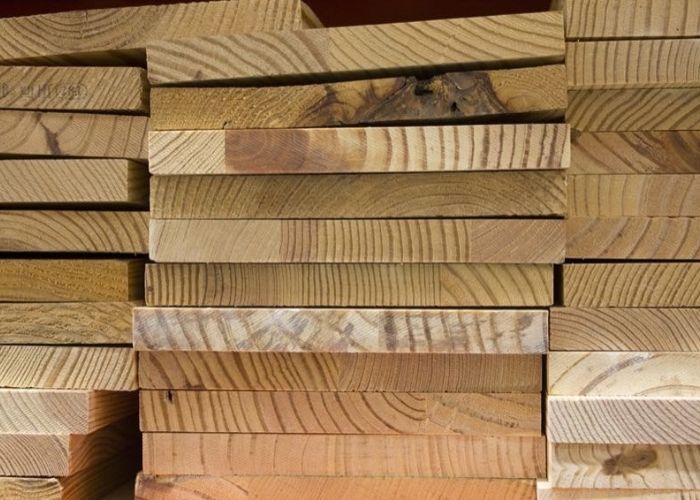
Pressure-treated plywood refers to a regular plywood sample that has gone through a special pressurized process to make it more durable and less prone to decay, water damage, and insect damage.
In addition, the wood can be treated such that it becomes fireproof. To manufacture pressure-treated plywood, timber is first put in a pressure chamber.
Next, a vacuum eliminates the air from the cylinder and the timber’s cell structure. Then, after correct fastening, it’s filled under pressure with treatment chemicals using 160 pounds of pressure.
Additionally, we can use pressure treated wood on concrete, ensuring durability and stability for various outdoor structures and installations.
Pros and Cons of Plywood Treated with Chemicals
PROS
Widely available and affordable
Pressure-treated plywood is the most common type used in the wood industry. This means it’s readily available in all locations. Its availability also makes it affordable.
Versatile
It’s also versatile. It can be used for construction, furniture, etc. Pressure-treated plywood is a literal blank canvas and is easy to work with to create anything you need. It can also be stained or polished to give the desired finish.
Durable
Pressure-treated plywood is durable. The unique preparation process allows the exterior plywood to withstand stress without being compromised.
Because of this, they last a long while. For example, some furniture made from pressure-treated plywood can last up to 40 years when maintained well.
Easy to repair
If the structure of the wooden product is compromised for any reason, pressure-treated plywood is repairable. When professionally done, they can be returned to their previous look without any obvious signs of previous damage.
CONS
Chemical risks
The process of pressure treating usually involves certain chemicals, which are toxic to humans when the wood is cut, trimmed, or burnt. Generally, using pressure treated wood indoors is not recommended.
Shrinks easily
Considering the necessity for drying treated wood extensively following chemical treatment, the likelihood of warping and shrinkage is elevated.
Read also: Can you burn pressure treated wood?
What Is Marine-Grade Plywood?
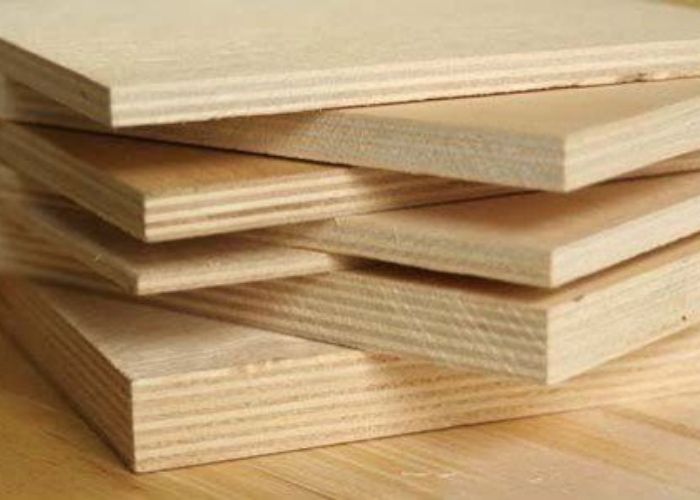
Marine-grade plywood, or marine plywood, is a durable, high-quality product that can withstand regular rain, snow, and moisture. Marine plywood is not chemically treated, unlike pressure-treated plywood.
Rather, marine-grade plywood’s thin veneer sheets are glued together in a cross-laminated manner using waterproof glue, pressure, and heat. The result is increased strength of the treated marine plywood.
Marine-grade plywood is used in manufacturing marine craft – no surprise there! Marine-treated plywood is also widespread in coastal areas for making sturdy garden furniture and outdoor crafts.
Related search: Can you use pressure treated wood for outdoor furniture?
Pros and Cons of Marine Plywood
PROS
Suitable for different weather conditions
Marine plywood works well in both dry and wet environments. It’ll last longer regardless of the weather. Also, termites and fungi have little chance of infiltrating it.
Easy to work with
Having thin layers brings its advantages. Marine plywood is both easy to cut and sand. The thin, strongly glued layers also mean the wood is quite lightweight despite its strength.
Durable
Marine plywood lasts for a long time, even in the harshest conditions. This explains why it’s commonly used in marine woodcraft.
CONS
Not completely waterproof
Marine-treated plywood is made to guard against water ingress, but it’s not waterproof. Wood isn’t entirely waterproof. In addition, marine plywood is not completely watertight. Here’s how to make marine plywood waterproof.
Costly
Marine plywood is also costly. It’s more expensive than most standard plywood products because there’re many processes involved in its development.
It still contains some chemicals
While one of the key selling points of marine plywood is the absence of chemical treatment, it’s still not 100% chemical-free. During manufacturing, chemicals are usually used to preserve the wood against termites and ants.
Read also: How do I know if wood is treated?
Pressure Treated Plywood vs Marine Plywood: In-Depth Feature Comparison
Marine-grade plywood and pressure-treated plywood are two different types of wood. They are produced from various wood materials and procedures and utilized for distinct purposes. We will consider some of the notable differences below.
1. Marine plywood vs treated plywood: Surface
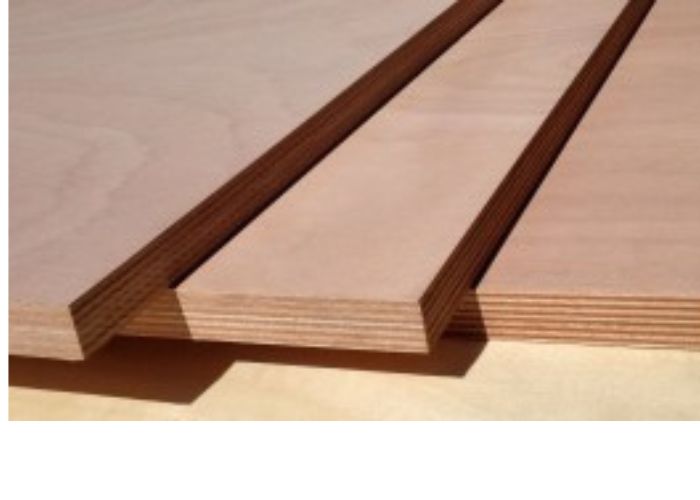
The surfaces of these wooden materials are easy to distinguish from one another. For example, marine plywood has smooth surfaces on both sides of the wood, while pressure-treated plywood has far rougher sides.
Aside from having a smooth surface, marine-grade plywood has a glossier, more refined feel than pressure-treated wood.
Read more on how to make marine plywood smooth and shy.
2. Marine grade plywood vs pressure treated: Bending Capacity
The bending capacity measures how much the plywood product can bend without structural failure like cracking or breaking.
The bending capacity of marine-grade plywood is poor. In specific terms, it cannot bend more than 18 mm. If this threshold is exceeded, cracks start to occur in its structure.
Upon continuous bending, the layers would give way and break apart. However, marine-grade plywood products could be supported if it is to be bent.
The pressure-treated plywood has a much higher bending capacity, allowing bending over 18 mm. This is because its layers are much less brittle than the fibers of marine-grade plywood.
3. Marine plywood vs pressure treated: Weight
Marine plywood is heavier than pressure-treated plywood. This is useful if you need to haul the products over long distances or rough terrain to the site where they would be used.
However, this downside is that heavier products cost more to transport from one place to another. Therefore, when used as furniture, it’s advisable to use lighter products if they are hung.
But for furniture placed on the floor, the denser or heavier choice could be preferred to reduce movement along the bottom.
4. Knots
Knots are imperfections in natural wood that disrupt the movement of wood grain along its surface, creating points of weakness in the wooden structure—the more knots on a plywood sample, the less its strength against compressive forces.
Pressure-treated plywood generally has more knots than marine-grade plywood because it’s made from lesser-grade materials.
However, not all grades of marine plywood are free from knots. For example, the A/A marine grade is free from knots, but the B/B grade has some knots.
5. Void and gaps
Because of the quality of the exterior grade plywood, there aren’t many voids and gaps between its layers. This is in contrast to pressure-treated plywood that contains voids and gaps between its constituting veneer sheets.
6. Number of layers
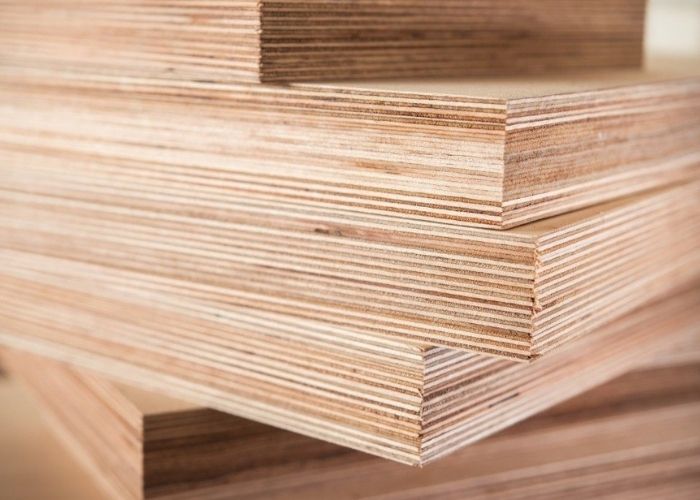
Marine plywood has a minimum of nine layers. Pressure-treated wood, meanwhile, has between five and seven layers. It can reach up to 15 layers, though.
7. Quality of veneers
Marine plywood is made from Douglas fir or Western Larch, while pressure-treated wood is made from pinewood.
Therefore, marine-grade plywood is used in making high-grade, quality products. However, this also means it has to be fitted with more quality veneers that look more appealing than cheaper plywood alternatives.
8. Price
Marine-grade plywood is more costly than pressure-treated wood. This makes a lot of sense, considering the quality of wood and the various processes involved in making marine plywood.
Also, marine plywood uses better layers and waterproof glue, which are desirable properties for many, causing a consequent price increase.
Interesting Read: Pressure-treated wood vs Cedar wood
FAQs
Is pressure-treated plywood waterproof?
No, plywood is not watertight after pressure treatment with chemicals. The wood’s preservation compounds will leach if it’s exposed to water. Softwood is used to allow chemicals to penetrate. Water will also penetrate softer timbers.
Are all plywood pressure treated?
No. Pressure treatment with chemicals is usually done separately. However, it’s generally specified as an add-on when purchasing plywood. Pressure treatment is done to increase the durability and strength of the plywood product.
Is marine plywood better than pressure-treated plywood?
In terms of the raw quality of the wood, marine plywood takes the win. Marine plywood is the way to go if you need a smooth, glossy appearance for your wood product. However, there’re cases where pressure-treated wood will be preferred to marine plywood. One example is if you need flexible wood as marine wood cannot bend more than 18 mm.
Is treated plywood and marine plywood the same?
No, treated plywood and marine plywood aren’t the same. The major areas of their difference are in their mode of manufacturing, the number of layers present, flexibility, and surface. Treated plywood also comprises softer wood than marine plywood.
Can I use pressure-treated plywood in a boat?
It’s complicated. Although you can use pressure-treated plywood on a boat, it’s not advisable because pressure-treated plywood isn’t designed or made to prevent the progression of water into its seams. In addition, pressure-treated wood isn’t suitable for objects exposed to water.
Here is a guide to understanding how to protect treated wood effectively, ensuring its durability against environmental factors, insects, and decay.
Final Verdict
Use Marine Plywood when:
You should use marine plywood for structures that might be exposed to a lot of moisture over time. This is because marine plywood is designed to resist the ingress of water into its seams; therefore, it would last longer and bode better under moist conditions.
Marine plywood can be used in boat building flooring for places exposed to moisture and water, like kitchens, bathrooms, and patios.
Related: Marine plywood alternative
Use Pressure-treated Plywood when:
Pressure-treated plywood, depending on the kind, could be utilized in almost any place. But, to elaborate, some chemicals are more suited to different situations.
Likewise, the same logic applies to the type of wood, which means that different types of wood are better suited to certain surroundings.
Confirm that whatever you want to use is chemically treated wood that doesn’t trigger the release of its treatment chemicals. So you can use pressure-treated wood when there’s no risk of continual exposure to heat and trimming.
Read more: How Much Weight Can Plywood Hold
Conclusion
Marine-grades plywood and pressure-treated plywood are the most commonly used wood types today. However, they are different, which means their application is different.
Both have pros and cons, and it’s difficult to pronounce one as better than the other. It all depends on what and where they are needed.
Irrespective of whichever one you choose, you should be cautious when disposing and using these woods as they both contain toxic chemicals.

